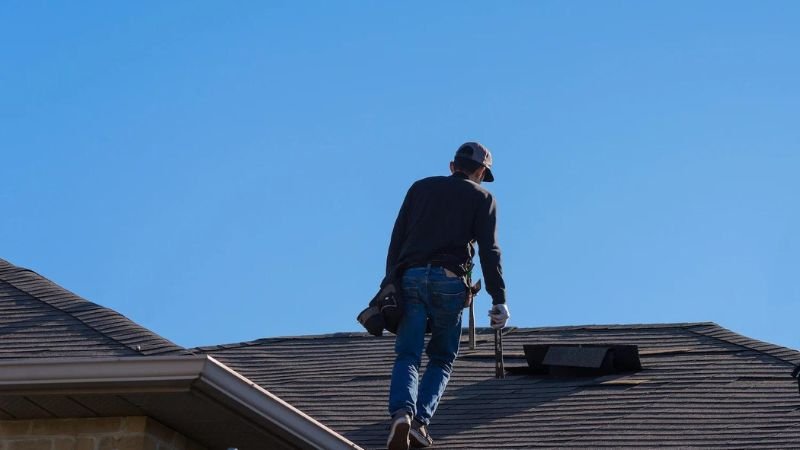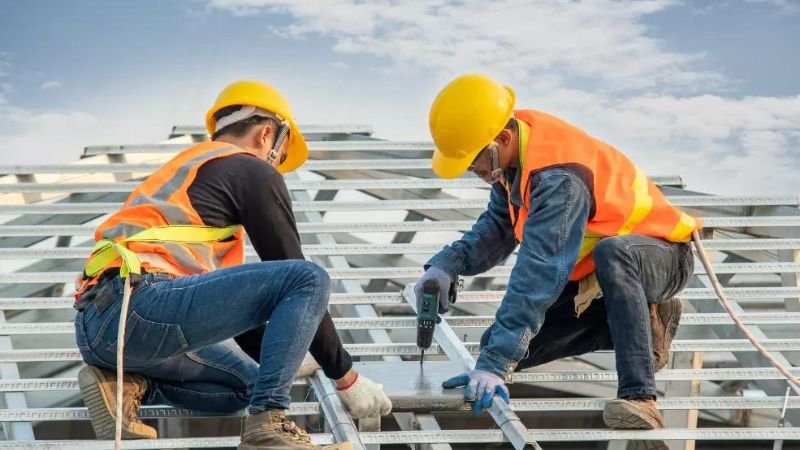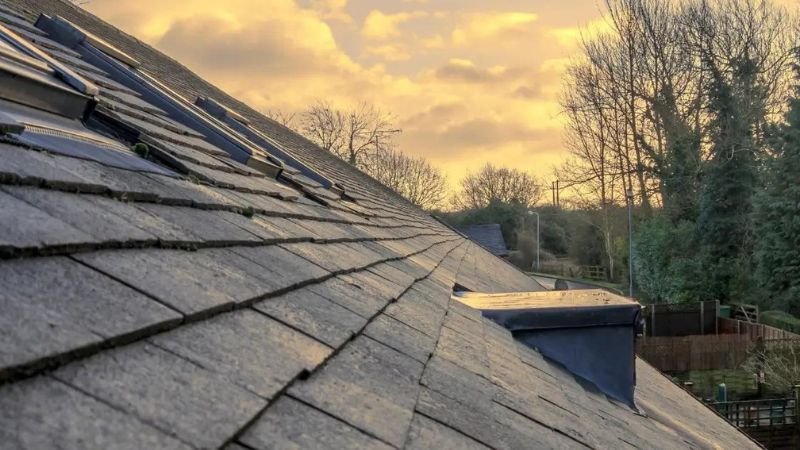Roofing storm damage can be a homeowner’s worst nightmare, leading to costly repairs and potential safety hazards. Knowing how to handle these repairs promptly and effectively is crucial to protecting your home and ensuring your family’s safety. In this blog, we will share seven essential tips for dealing with roofing storm damage repairs. From assessing the extent of the damage to selecting a reliable roofing contractor, these practical tips will guide you through the process, helping you make informed decisions and avoid common pitfalls. Whether you’re facing minor leaks or extensive structural damage, our expert advice will help you navigate the repair process with confidence and ease.
7 Tips To Deal With Roofing Storm Damage Repairs
1. Conduct a Thorough Inspection
After a storm has passed, the first step in addressing roofing storm damage is to conduct a thorough inspection. Safety should be your top priority, so ensure the storm has completely subsided before venturing outside. Begin by examining the ground around your home for any debris or fallen shingles, which could indicate roof damage. Next, carefully inspect your roof from the ground using binoculars to spot any visible signs of damage such as missing shingles, dents, or cracks. If you feel comfortable, use a sturdy ladder to get a closer look, but avoid climbing onto the roof if it’s steep or visibly unstable. Take pictures and make thorough notes of every damage. This inspection will help you assess the extent of the damage and provide necessary information when filing an insurance claim or contacting a professional roofer for repairs.
Also, Read – Top 9 Roof Maintenance Tips For Homeowner
2. Document the Damage for Insurance Claims
Proper documentation is crucial when dealing with roofing storm damage, as it can significantly impact your insurance claim process. Start by taking comprehensive photographs of all damaged areas, both up close and from a distance, to provide a clear visual record. Include pictures of the ground-level damage, such as fallen branches or broken shingles, as well as any interior damage caused by leaks. Write detailed descriptions of each damaged area, noting the location and extent of the damage. If possible, gather previous maintenance records and photos of your roof before the storm to demonstrate the contrast. Contact your insurance company as soon as possible to report the damage and provide them with all the collected evidence. An adjuster will likely visit your property to assess the damage, so be prepared to share your documentation to support your claim and expedite the process.
3. Make Short-Term Fixes to Stop More Damage
While waiting for professional repairs, it’s essential to make temporary fixes to prevent further damage to your home. Start by covering any exposed areas with tarps or heavy-duty plastic sheeting to keep out rain and debris. Secure the coverings with nails or heavy objects to ensure they stay in place during windy conditions. If there are leaks inside your home, place buckets or containers to catch dripping water and use towels to absorb moisture. Be cautious when using temporary repair materials, as improper application can lead to more damage. Avoid walking on the roof if it’s wet or unstable, and never attempt repairs during adverse weather conditions. These temporary measures will help protect your home from additional water damage and provide you with some peace of mind until professional repairs can be completed.
4. Hire a Professional Roofing Contractor
When dealing with significant roofing storm damage, it’s crucial to hire a professional roofing contractor to ensure the repairs are done correctly and safely. Look for contractors who are licensed, insured, and have experience with storm damage repairs. Seek recommendations from friends, family, or neighbors, and read online reviews to gauge the reputation of potential contractors. Obtain multiple quotes to compare pricing and services, but be cautious of unusually low bids, as they may indicate subpar workmanship or the use of inferior materials. Verify the contractor’s credentials and ask for references to check their previous work. A reliable contractor will conduct a thorough assessment, provide a detailed repair plan, and use high-quality materials to restore your roof’s integrity. Hiring a professional will ensure the job is done right, preventing future issues and extending the lifespan of your roof.
Also, Read – 10 Signs You Need To Replace Your Roof
5. Understand Your Insurance Policy
Understanding your insurance policy is essential when dealing with roofing storm damage repairs. Review your policy to determine what types of damage are covered, the extent of coverage, and any deductibles you may be responsible for. Some policies may have specific clauses related to storm damage, so it’s important to be aware of these details. Contact your insurance agent to clarify any questions and ensure you understand the claims process. Keep all receipts and records of any temporary repairs you make, as these may be reimbursed by your insurance company. If your claim is denied or the settlement amount is insufficient, consider seeking the assistance of a public adjuster or an attorney who specializes in insurance claims. Being well-informed about your insurance policy will help you navigate the claims process more effectively and ensure you receive the compensation you need for repairs.
6. Schedule Regular Roof Maintenance
Preventive maintenance is key to minimizing the impact of storm damage on your roof. Frequent roof maintenance and inspections can assist in spotting possible concerns early on and addressing them before they worsen. Schedule professional inspections at least twice a year, typically in the spring and fall, to assess the condition of your roof and perform any necessary repairs. Keep your roof clear of debris, such as leaves and branches, which can trap moisture and lead to damage. Trim overhanging tree branches to prevent them from falling on your roof during storms. Check for and repair any loose or damaged shingles, flashing, and gutters. Ensuring your roof is in good condition will enhance its ability to withstand severe weather and reduce the likelihood of extensive damage when storms occur.
7. Be Prepared for Future Storms
Being prepared for future storms can help you respond quickly and minimize damage to your roof. Create an emergency kit with essential supplies, such as tarps, roofing nails, and a hammer, to make temporary repairs if needed. Keep a list of emergency contacts, including your insurance company, a reliable roofing contractor, and local emergency services. Stay informed about weather forecasts and take proactive measures to secure your property when severe weather is expected. Clear gutters and downspouts to ensure proper drainage, and reinforce vulnerable areas of your roof if possible. Consider investing in impact-resistant roofing materials that can better withstand storm damage. By being prepared, you can protect your home and reduce the stress and financial burden of dealing with roofing storm damage repairs.
Conclusion
Dealing with roofing storm damage repairs can be overwhelming, but following these seven essential tips can simplify the process. By acting quickly, assessing the damage thoroughly, and choosing the right professionals for the job, you can ensure your roof is restored to its original condition. Remember, proactive maintenance and timely repairs are key to prolonging the lifespan of your roof and safeguarding your home against future storms.
FAQs
What should I do immediately after a storm to assess roof damage?
Start by visually inspecting your roof from the ground, looking for missing shingles, debris, or obvious damage. If it’s safe, use a ladder for a closer look, but avoid walking on the roof to prevent further damage or injury.
How can I find a reliable roofing contractor for storm damage repairs?
Look for contractors with strong local reputations, positive reviews, and proper licensing and insurance. Get multiple quotes and ask for references to ensure you’re hiring a trustworthy professional.



